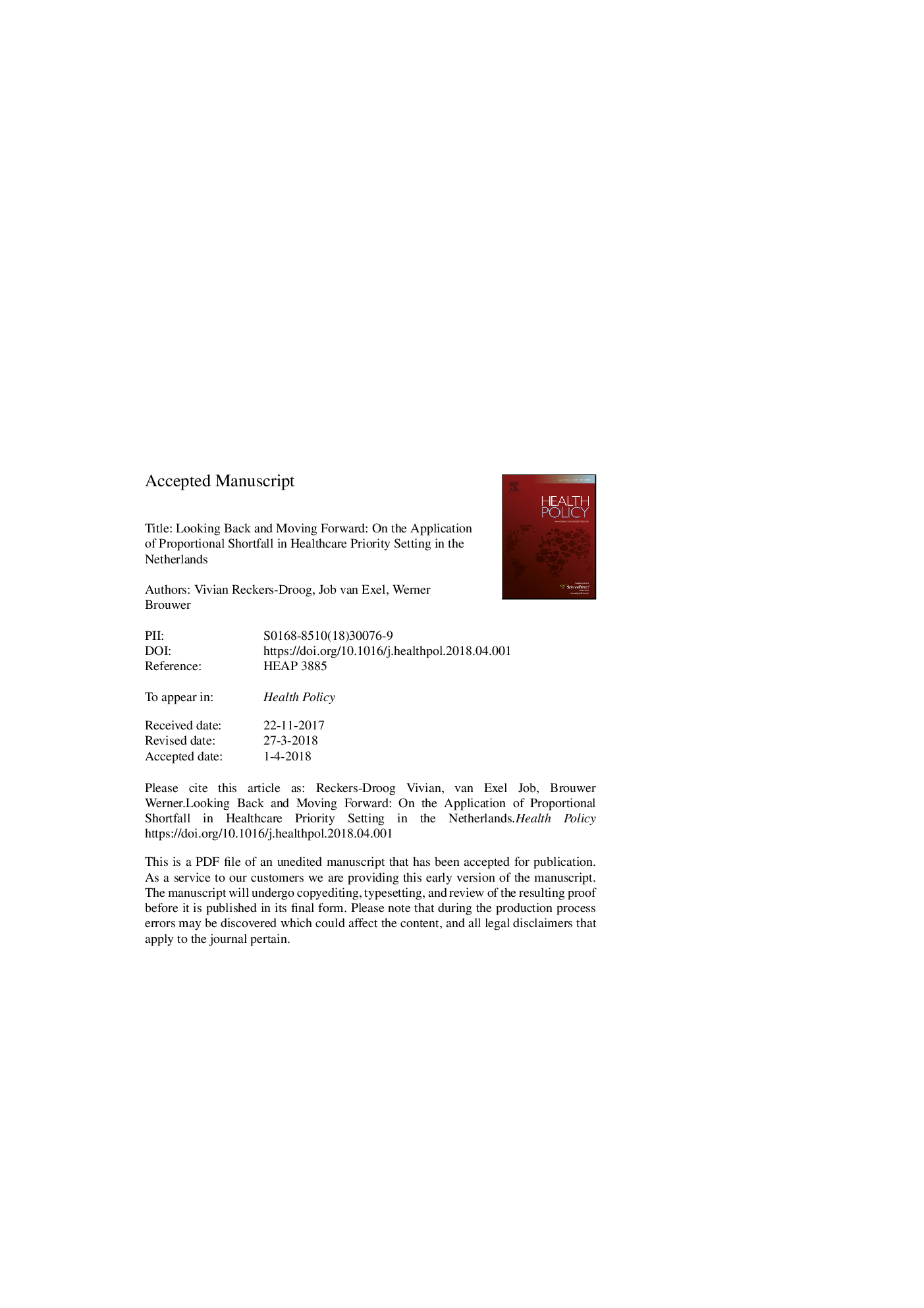| Article ID | Journal | Published Year | Pages | File Type |
|---|---|---|---|---|
| 8817921 | Health Policy | 2018 | 30 Pages |
Abstract
The increasing demand for healthcare and the resulting pressure on available budgets render priority setting inevitable. If societies aim to improve health and distribute health(care) fairly, equity-efficiency trade-offs are necessary. In the Netherlands, proportional shortfall (PS) was introduced to quantify necessity of care, allowing a direct equity-efficiency trade-off. This study describes the history and application of PS in the Netherlands and examines the theoretical and empirical support for PS as well as its current role in healthcare decision making. We reviewed the international literature on PS from 2001 onwards, along with publicly accessible meeting reports from the Dutch appraisal committee, Adviescommissie Pakket (ACP), from 2013 to 2016. Our results indicate that there is support for the decision model in which necessity is quantified and incremental cost-effectiveness ratios are evaluated against associated monetary reference values. The model enables a uniform framework for priority setting across all healthcare sectors. Although consensus about the application of PS has not yet been reached and alternative ways to quantify necessity were found in ACP reports, PS has increasingly been applied in decision making since 2015. However, empirical support for PS is limited and it may insufficiently reflect societal preferences regarding age and reducing lifetime-health inequalities. Hence, further investigation into refining PS-or exploration of another approach-appears warranted for operationalising the equity-efficiency trade-off.
Related Topics
Health Sciences
Medicine and Dentistry
Public Health and Health Policy
Authors
V.T. Reckers-Droog, N.J.A. van Exel, W.B.F. Brouwer,
